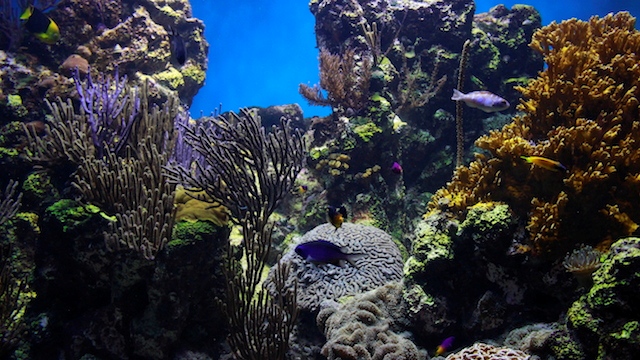To respond to the Do Now, you can comment below or tweet your response. Be sure to begin your tweet with @KQEDEdspace and end it with #DoNowSpecimen
For more info on how to use Twitter, click here.
Do Now
To what extent should museums and aquariums be collecting organisms from the wild?
Introduction
Imagine walking through a museum’s research collection of many living and nonliving animals and plants. Although you may be amazed by the massive quantity of organisms provided, you may also wonder why there are so many in the collections, and what research purposes they have. Recently, there has been a debate among scientists about the necessity of collecting specimens from the wild. Many strong arguments have been presented for both sides of this controversial issue. While it is common for museums, aquariums and zoos to collect specimens for observation and research, it has been argued that with recent technological advances there may be several alternative options for studying species.
For centuries, museums and scientists have been collecting animals, plants and other organisms from the wild. Several natural history museums in the U.S. with large specimen collections are the Smithsonian, the American Museum of Natural History, the Field Museum and the California Academy of Sciences. Museums collect specimens for many reasons. Primarily, they collect in order to provide voucher specimens for crucial scientific research and to display the collected organisms for the public. Non-living museum collections are used by scientists to study internal anatomy, systematics and disease. Living collections are used to study behavior and ecology in organisms where such studies might be difficult or impossible to do in the field. Collecting organisms from the wild has been a popular and controversial subject among scientists in the past couple of years. One reason why people are worried about this issue is because of the staggering amount of living and nonliving organisms in captivity. For example, there are nearly 390 million non-living specimens, which include rocks, plants and animals, in the five largest museums in the world. The California Academy of Sciences has close to 40,000 living animals available for the public to view, some of which are newly described or are previously unstudied species collected from the wild. Some experts say that collecting animals is a requirement in order to expand and answer scientific research questions, while others believe it is unsustainable and now unnecessary because of technological advances. People who support different sides of the issue have come to one compromise, which is requiring scientific collecting permits. This allows those with permits to sustainably collect wild specimens, though there are still questions about the process among the scientific community.
Collecting organisms from the wild serves many purposes, primarily in the areas of research and conservation. Some science programs harbor a large collection of many species, which enables researchers to study and learn more about the species first-hand. Collections are shared among museums and universities, with researchers traveling between institutions to study specimens. Collecting allows more data to be gathered than simply observing organisms in the wild. With this data, scientists can discover opportunities to conserve endangered species through understanding more about the behaviors and environmental needs of those species. Many specific traits and qualities of these organisms cannot be found without a physical portrayal of the species. In relation to that, morphological diversity, or the variations among species, can be researched far more efficiently through collecting rather than methods of observation. On a smaller scale, live animals collected can be displayed for the public to see and appreciate, as exhibited in the California Academy of Sciences, which gives the public a better connection to endangered species, thus creating a greater incentive to protect and conserve. Although collecting can be invasive, there are international limits on certain species and amount of specimens that may be taken from their environments. One of the major players in this area is CITES, an international treaty that created varying levels of protection to over 30,000 species of both plants and animals. In short, documenting biodiversity in an efficient and humane way gives us a better understanding of the world we live in and in doing so, humans and other species can more effectively coexist.
